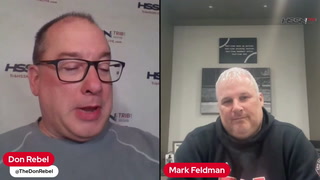Fox Chapel, Norwin set off shot-clock debate in high school basketball community
By:
Thursday, February 6, 2020 | 7:10 PM
Plenty of people who viewed a short video clip last week of Fox Chapel holding the basketball for nearly a minute against Norwin had a strong opinion of what they had just watched.
The 45-second clip drew more than 110,000 views — and more than 100 replies — on Twitter.
Many questioned why the Foxes, the WPIAL’s and state’s top-ranked team in Class 6A, would freeze it with a minute left in the first half, up 18-13 against the upset-minded Knights.
“That’s not basketball,” several responded.
Fox Chapel held the ball for about a minute late second quarter.
Shot clock people ready to lose their stuff.
Thrilling video.@FxCAthletics @NorwinBoys @norwinathletics pic.twitter.com/4FTSnGqSVQ
— Bill Beckner (@BillBeckner) January 29, 2020
Some took offense to Norwin sagging in a zone and not contesting what ultimately proved to be an inconsequential possession.
Neither team was right or wrong for what they did, and holding the ball is neither a new concept nor an epidemic in Pennsylvania basketball.
But the stalling of play can stir the pot and fuel debates.
Fans want movement and tempo on offense and pressure on defense. And coaches want to win.
There is a layup line of questions.
Why hold the ball at all? And, if teams do choose to bring the game to a standstill, what situations prompt the idea?
Would a shot clock, like other states have, help matters?
Athletic Fox Chapel is 20-0 and has shown it can run or slow it down. The defensive-minded Foxes allow just 42.7 points a game. But a team that good should not need to hold the ball, right?
Depends on who you ask.
Foxes coach Zach Skrinjar said the hot topic, as least as it relates to what his team did against Norwin in a 48-37 victory, is “water under the bridge.”
Fox Chapel, however, has held it before and probably will hold it again. It obviously works for them. And if teams don’t apply pressure, they won’t rush to get up shots.
“It’s a strategy we use when we need to situationally, not something we plan for on a routine basis,” Skrinjar said. “I’m an advocate for a shot clock if it can be implemented, but I don’t see it dramatically changing the way our team prepares or how the game would be played across the WPIAL and at the high school level.”
Norwin coach Buddy Valinsky thought some of the criticism of his team waiting to defend Fox Chapel in that situation was unfair. He didn’t think it had an affect on the outcome.
He said his team would have attacked the ball and forced the issue had it been the fourth quarter.
“It can help when your team is in foul trouble,” Valinsky said. “It can make the other team play man-to-man. It wasn’t really a big deal in that game.”
Valinsky coached many strong teams at Allderdice, where he won six straight City League titles. He had fast-paced teams that usually didn’t slow down until a timeout or quarter break.
“I (held) it once in 2005 when we played a powerful Schenley team who went to the state finals and lost to Lower Merion,” Valinsky said. “(Lower Merion) ran four corners on them in the state finals.”
A four-corners offense is when a team freezes the ball by having four player stand at each corner in a halfcourt set while a fifth player dribbles the ball in the middle.
“Mt. Lebanon has done it several times with much success,” said Valinsky, who would like to see a shot clock in Pennsylvania — an expensive proposition for most schools.
Some good Uniontown teams of the past were known to hold the ball for nearly an entire 8-minute quarter.
Former Burrell coach Shawn Bennis, who also coached and played at Highlands, said his old coach was known for stalling. But he also won with the tactic.
The late Tom Myers, Bennis said, once held it for a whole quarter and Highlands took a 2-0 lead into halftime against Kiski Area.
“In reality, (Skrinjar) got an extra possession by holding for the last shot,” Bennis said. “Nothing wrong with that with 50 seconds (left). You can’t judge them if you’re not in their gym every day.”
Hempfield coach Bill Swan has been known to slow teams down and force low-scoring outcomes.
He said the decision to slow down the ball is based on cirumstances.
“Do we have the lead? Are we in foul trouble? Is our opponent better than us ?” Swan said. “We usually only do it at the end of quarters for (a final) shot.”
Swan likes to work the clock, especially when his team is ahead. He said a shot clock is not the answer.
“It’s not easy to hold it,” he said. “Coach (Bob) Kalp always says bad teams can’t hold the ball. We practice it a lot.”
There are 10 states that use a shot clock of 30 or 35 seconds at the high school level. Last season, Latrobe played in a tournament in New York and had to adjust to a shot clock.
“I wouldn’t have any objections to the shot clock being introduced in PA,” Latrobe coach Brad Wetzel said. “We played a few games in New York and it had little effect in the way we conducted our style of play. However, there were some strategic decisions when it came to the end of quarters as to clock management. This is would possibly be beneficial to the players who plan on playing at the next level.”
College basketball uses a 30-second shot clock, which resets to 20 after an offensive rebound.
Bill Beckner Jr. is a TribLive reporter covering local sports in Westmoreland County. He can be reached at bbeckner@triblive.com.
Tags: Burrell, Fox Chapel, Hempfield, Latrobe, Norwin
More Basketball
• 23 WPIAL players picked to 2024 all-state boys basketball team, including 2 players of the year• Hampton basketball readies for rare coaching search
• Hall of fame basketball coach Joe Lafko steps down at Hampton
• Corey Dotchin steps down as Highlands boys basketball coach
• PIAA taking bids to host basketball championships









